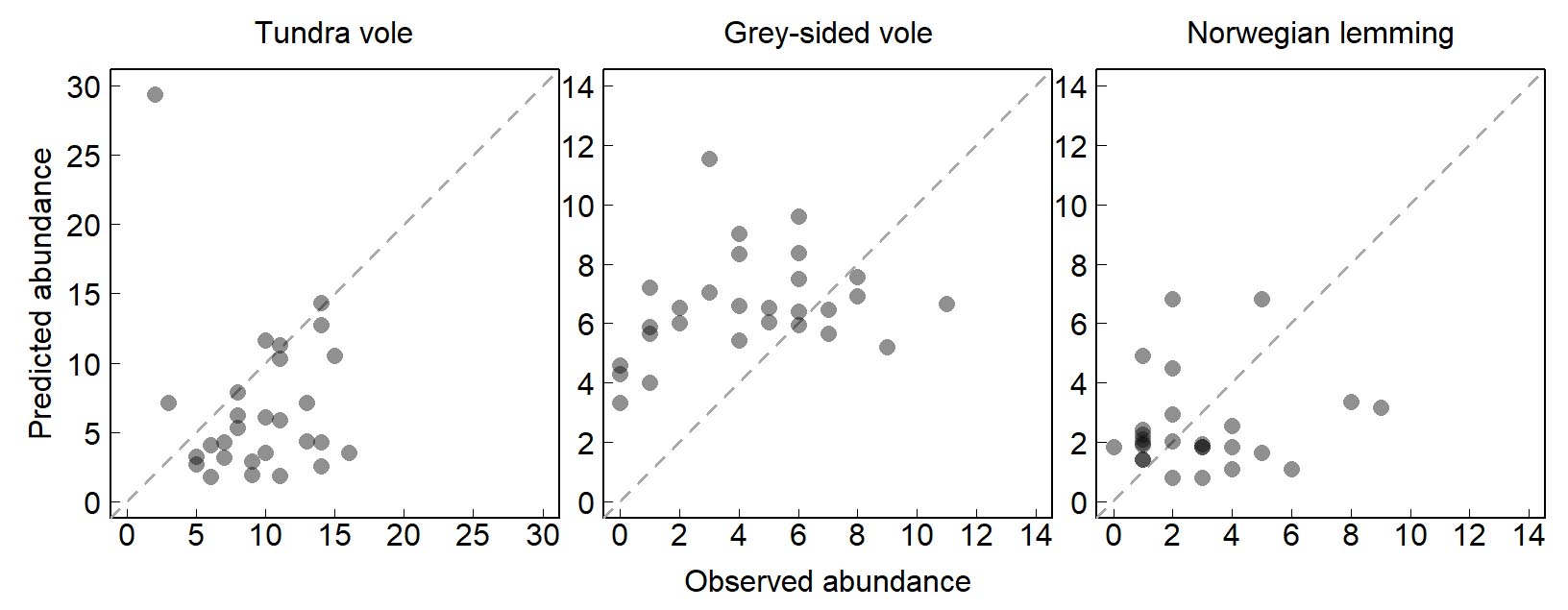During population peak 2007 tundra voles abundance increased with shelter grass abundance.
Soininen and colleagues show that in some occasions food and shelter provided by plants is related to rodent peak abundance. Still, plants alone were not enough to predict how high the next rodent peak would be.
During the rodent population peak in 2007 at Varanger peninsula, rodents were abundant in the same locations where shelter was abundant. The same was true for some food plants; the more food the more rodents. Other food plants again showed an opposite pattern: the more rodents the less food as they eat up an increasing amount of plants.
During the next population peak, 2011, these patterns disappeared. Models that were developed for the data from 2007 predicted poorly rodent abundance in 2011. The role of plants was then likely to be overdriven by other food web components (like predators) and weather.
This study highlights two challenges for predicting food web functioning to the future: i) gathering long enough time-series to include different situations in the predictive models and ii) including several key interactions instead of isolating one of them from the remaining food web. The long-term monitoring of food webs by COAT attempts to address both of these challenges.

Comparison between observed and predicted abundances of three rodent species at Varanger peninsula during the rodent peak 2011. Predictions of rodent abundance based on model structure from the previous peak in 2007 and plant data from 2011 were poor especially for the voles.
Further reading:
Full paper: https://onlinelibrary.wiley.com/doi/abs/10.1002/ece3.4399